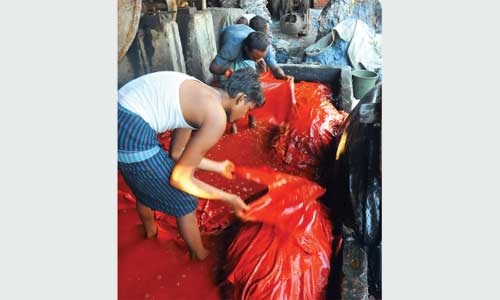Do you know!!! 20,000 liters of water are needed to make a single pair of jeans and a t-shirt. To put this into perspective, it would take 13 years to drink this amount. Isn’t this too frustrating? We are trying to make our world sustainable by wearing jeans and a t-shirt which are drinking our world water. Don’t be upset, I am here to introduce a new technology that saves 95% of the water in apparel washing. This is e-flow or Nanobubble technology.
What is NanoBubble technology?
Nano Bubble Technology is new which is widely known as e-flow. E-flow was invented and patented by a Spanish company Jeanologia in the year 2012. The e-flow ‘breaks up the surface of the garments, achieving a soft hand feel and controlling shrinkage. A minimal quantity of water is needed and there is zero discharge from the process.
How it works?
Air from the atmosphere is taken into an electro-flow reactor and subjected to an electro-mechanical shock that creates Nanobubble sand a flow of wet water. The Nanobubbles are transported into a rotating tumbler containing the denim samples .It give the samples a soft and natural hand feel. The samples are then dried even in the same tumble machine it is possible to dry up. If the denim have unfixed indigo dye in the surface of the denim, the e-flow processes breaks up the indigo molecule from the surface of the denim and then the process produces a pre-shrinkage of the fabric. Thus the fabric do not shrink when

laundry. This machine has a capacity of 100L, the amount of Nano bubble is 106-109 bubbles/cm2, and Average consumption of power is 1KW. We can get it in two types: dry contact box and wet contact box. We can get resin for 3d effects, easy care, water repellency and softening in the process. So the garments are comfortable to wear with an improved color and rubbing fastness.
Benefits Of the process:
Finishing garment companies will benefit in both economic and environmental aspects. It reduce 95% of water used in finish garment process. Do not eliminate water and chemical in the environment. It saves 50% of the chemical. It uses 79% less power.

Conclusion:
At the end we can say water is over so air is the future. With the help of the Nanobubble technology we can make our world sustainable with zero discharge.
















